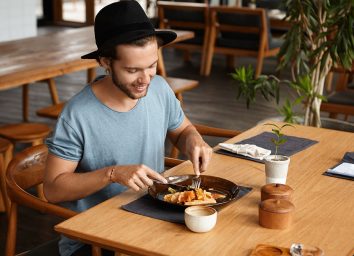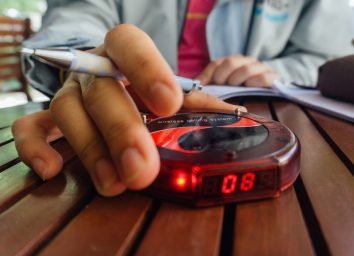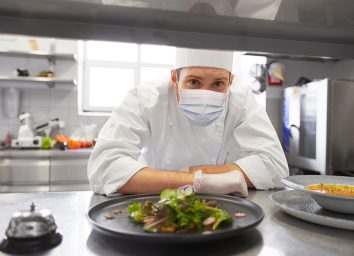7 Warning Signs It's Not Safe to Eat in a Restaurant
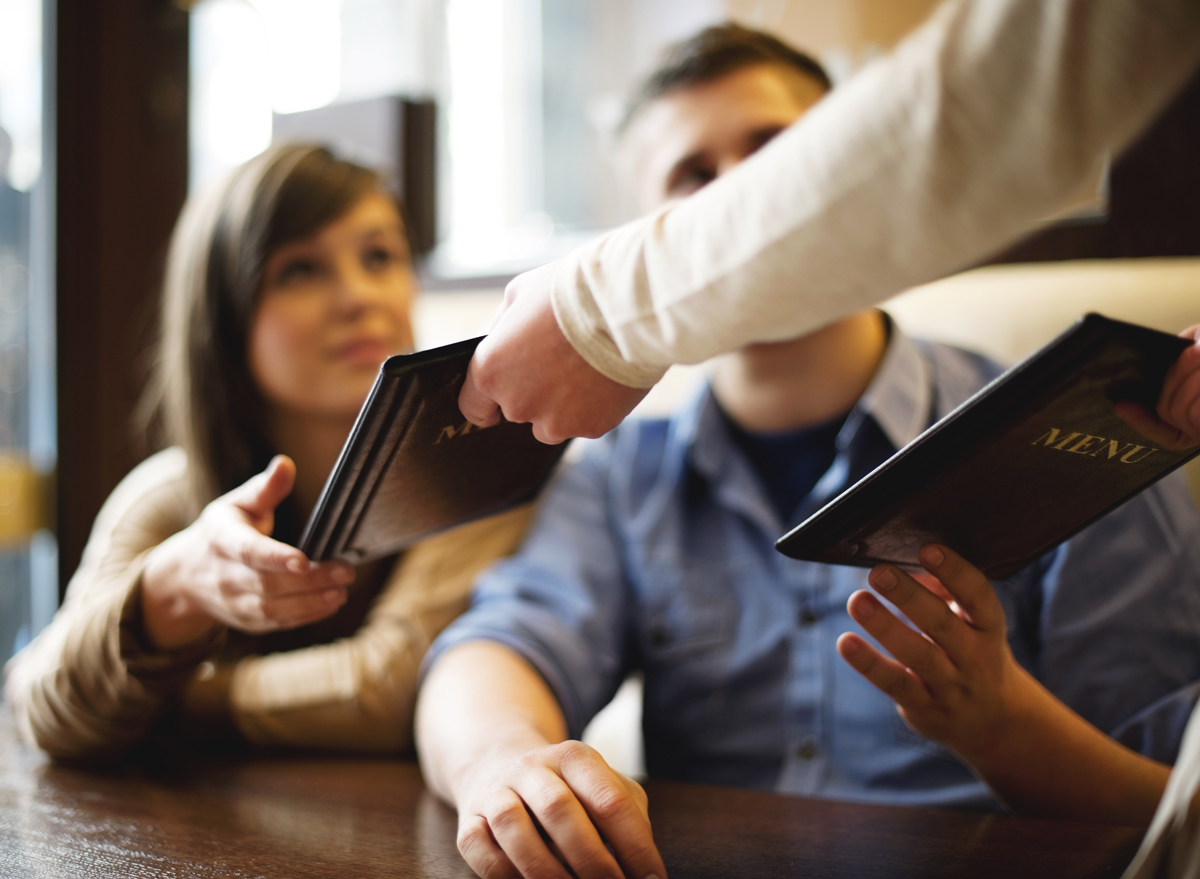
After cooking every meal for you and your family every day for months, you rightfully deserve a night out. While you're probably looking forward to dining out at your favorite restaurant once coronavirus restrictions are lifted, that doesn't mean you can let your guard down entirely when eating out.
Although the Centers for Disease Control and Prevention (CDC) and state governments have been releasing guidelines restaurants have to follow to reopen—that doesn't mean all restaurants will comply.
If you notice any of these warning signs when you get to a restaurant, turn right back around if you want to protect yourself from getting coronavirus. And to get the latest food news delivered straight to your inbox sign up for our newsletter!
The hostess isn't wearing a face mask
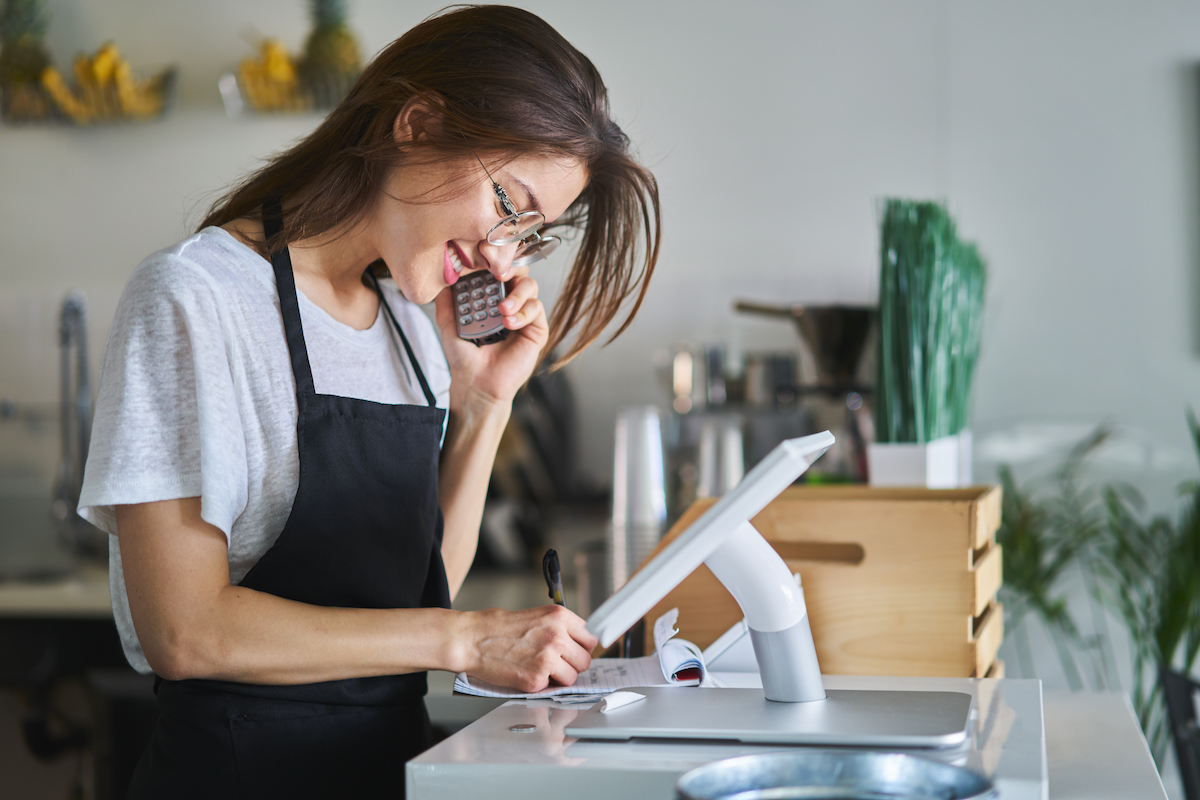
All restaurant employees are required to use cloth face masks, according to the CDC considerations for reopening restaurants and bars. That goes for everyone from hostesses to waiters to chefs. When you walk up to a restaurant and notice that the host isn't wearing a mask, you should turn right back around. Restaurant employees need to wear masks in case they unknowingly have the virus and are asymptomatic. That way, they can't pass the virus onto you. On top of not being able to greet you without a mask, here are another 4 Things Restaurant Hosts Are No Longer Allowed to Do.
There are condiments on the table
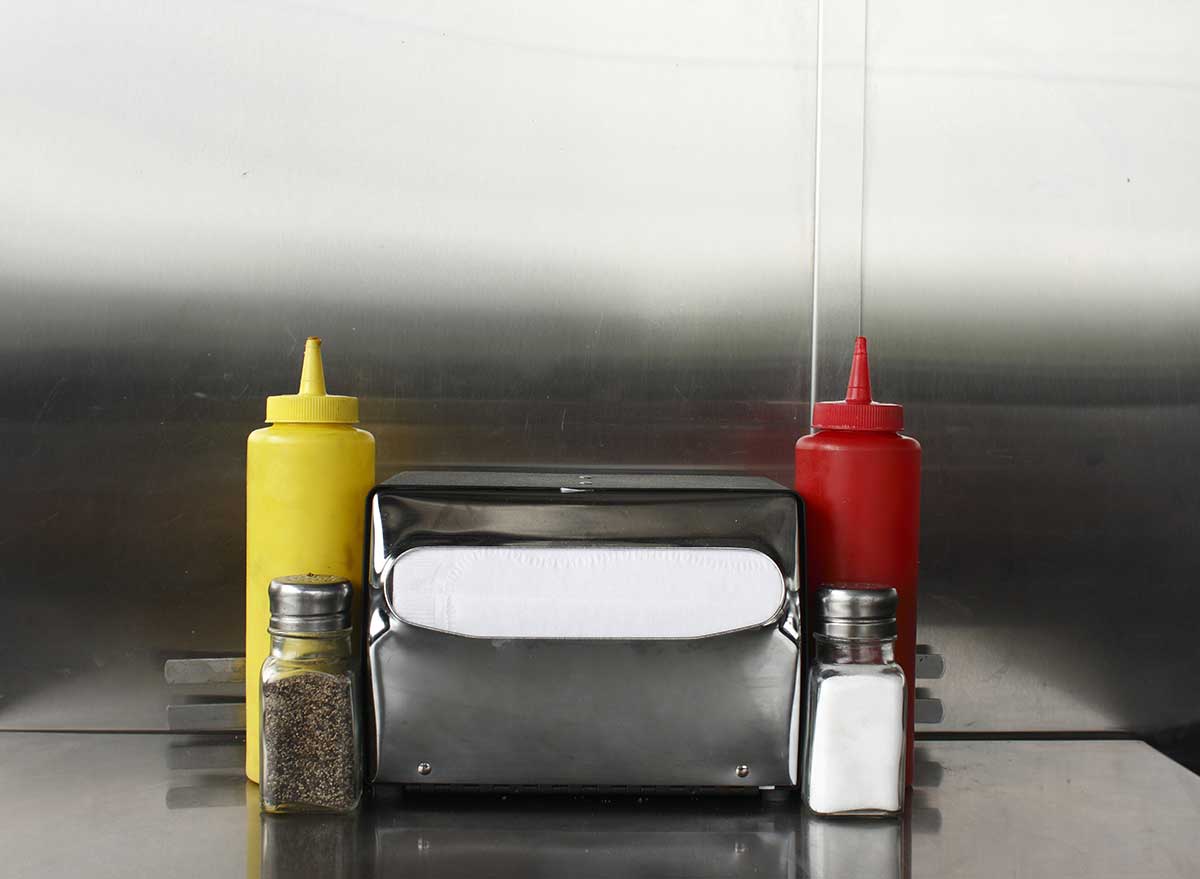
Reducing the number of shared objects at a restaurant is key in preventing the spread of the coronavirus between customers. If one patron is infected with COVID-19 and uses shared condiments, if the waitstaff does not properly sanitize them between seatings, it's possible that the virus can be passed on to the next person who needs some ketchup for their fries. Instead, you'll be using single-serve condiments. Along with never being able to tap the "57" on a Heinz ketchup bottle again, there are 9 More Things You'll Never Be Allowed to Do in Restaurants Again.
Your waiter hands you a reusable plastic menu
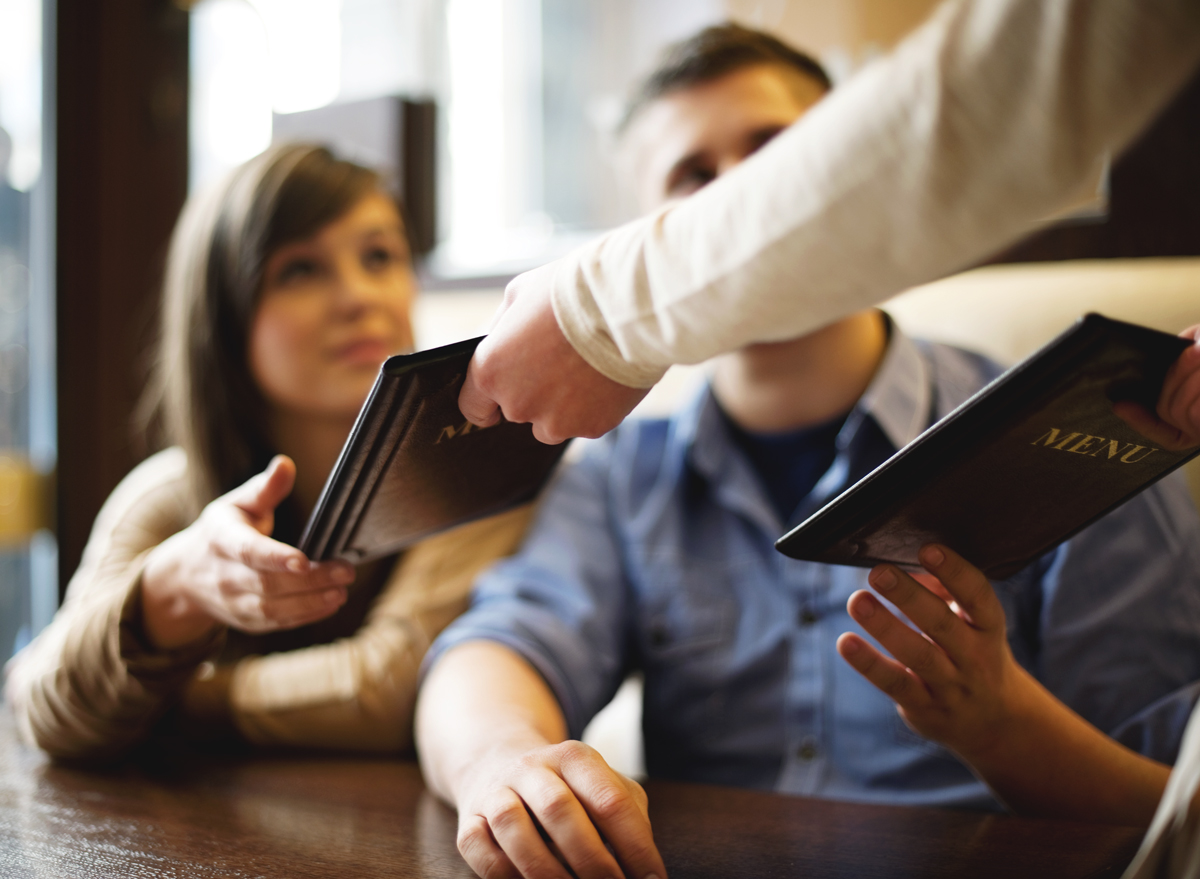
The CDC guidelines suggest that restaurants "avoid using or sharing items that are reusable, such as menus." As an alternative, restaurants should "use disposable or digital menus." Restaurants can continue to use plastic menus if they are properly sanitized between uses, but make sure you ask the waiter what their sanitation policy is before you grab the menu they're handing you.
People are waiting to be seated inside the restaurant
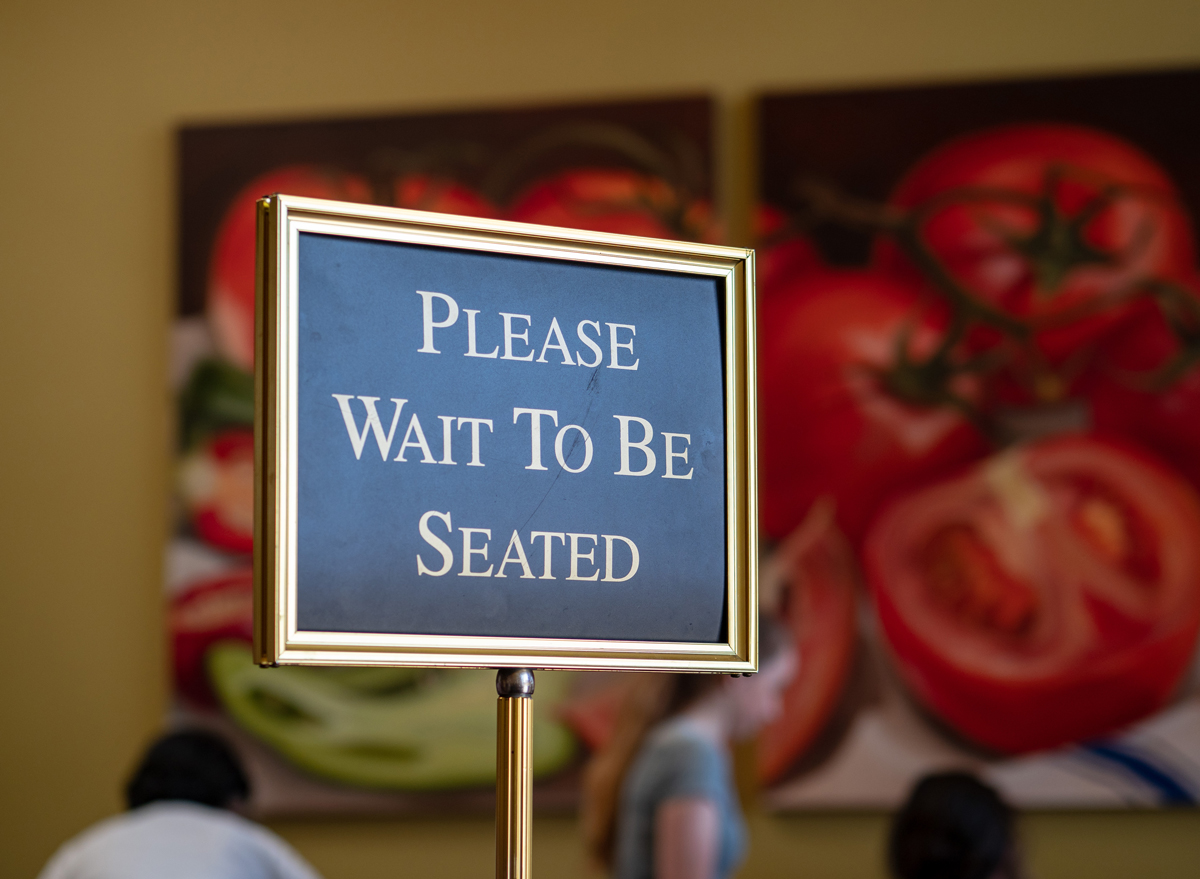
Restaurants should encourage patrons who are waiting to be seated to wait outside of the restaurant in the parking lot, in their cars, or elsewhere, according to CDC guidelines. You won't be allowed to wait inside the lobby area of the restaurant because it's nearly impossible to keep a safe social distance of six feet. If a restaurant is allowing you to put yourself at risk here, who know what other measures they're shortcutting to keep your dining experience safe.
The restaurant is packed
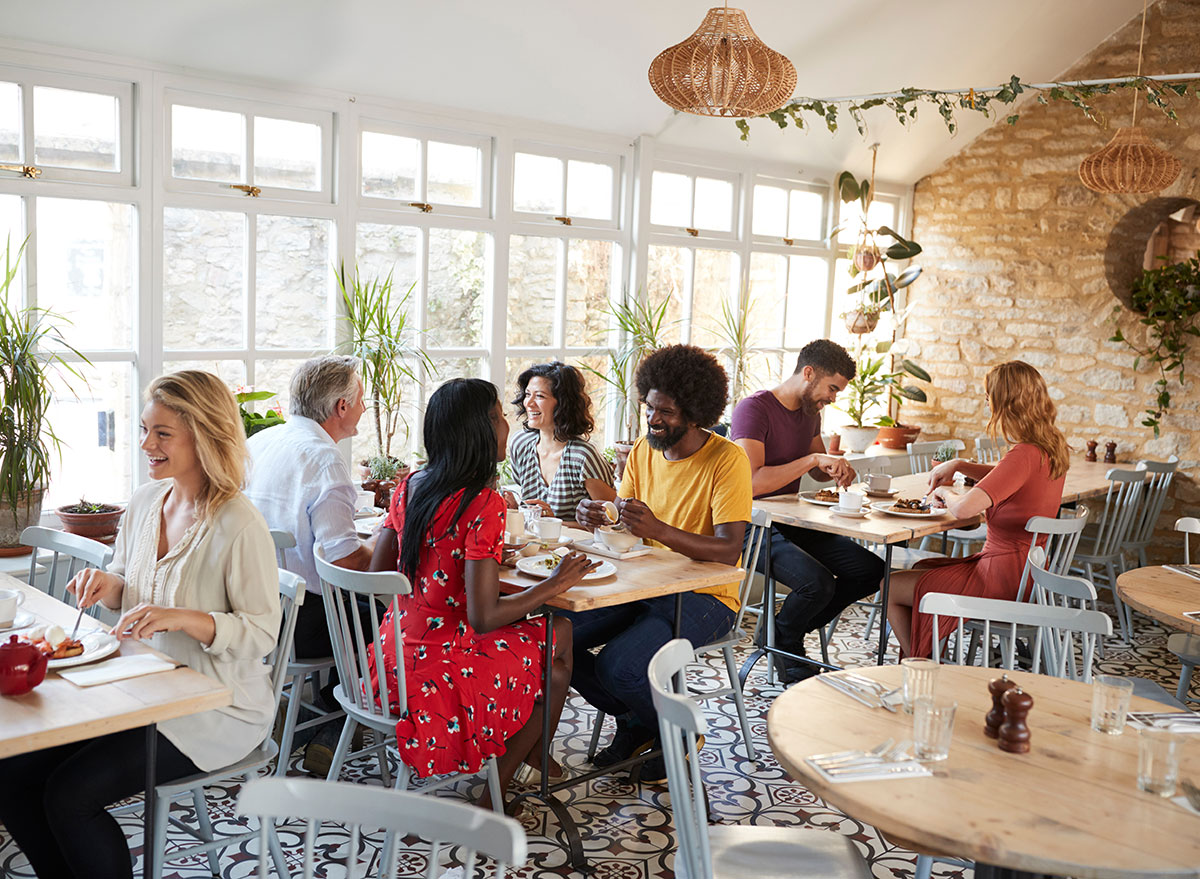
Before you're seated, look around. Are some barstools closed off? Is there sufficient spacing between tables? The CDC says that restaurants need to reduce their seating capacity enough to allow tables to be spaced at least 6 feet apart. If the restaurant you're about to eat at is packed, that means the owner is not following safe social distance guidelines and that could put you at risk for contracting COVID-19.
The air is stuffy
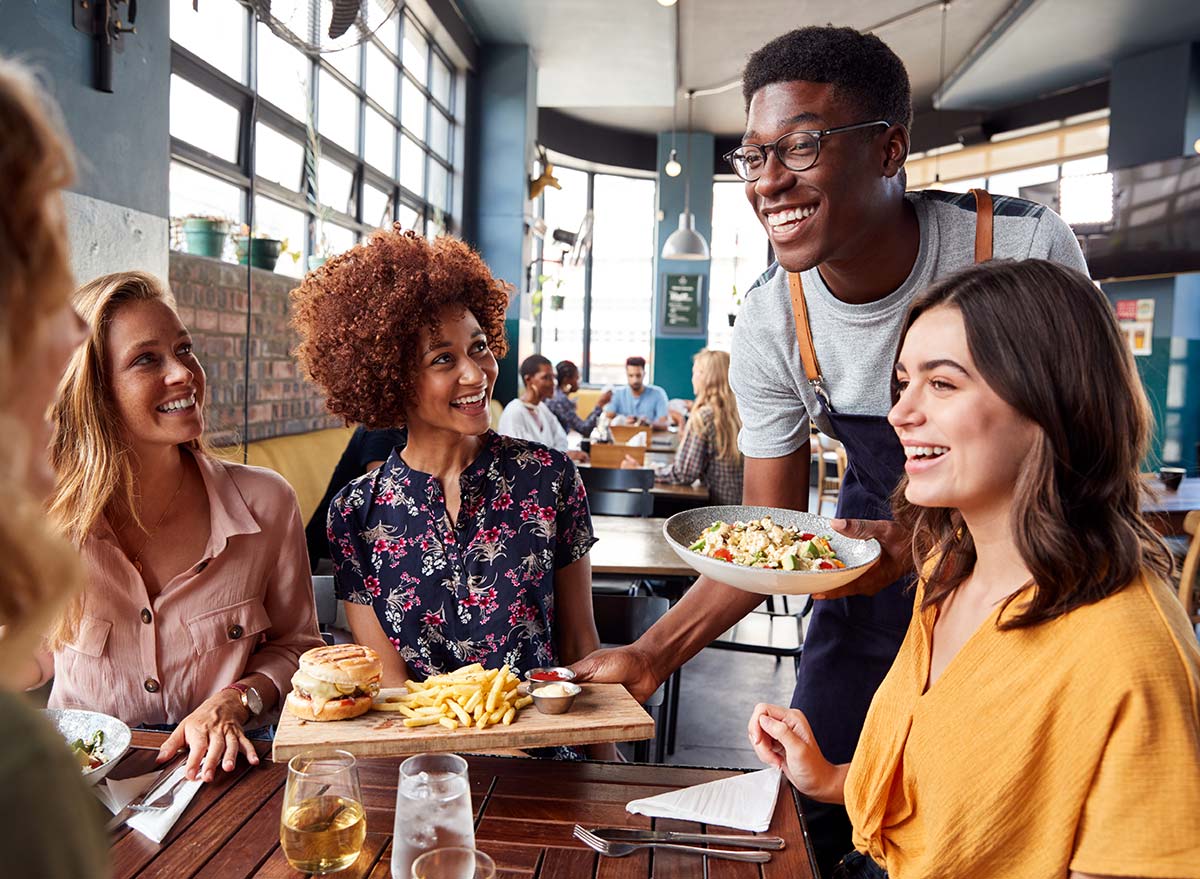
Being in enclosed, tight spaces poses a high risk that you can contract coronavirus. That's because if an infected person coughs, sneezes, or breathes, respiratory droplets can be suspended in the air and pass along to adjacent patrons. The CDC says that restaurants need to "ensure that ventilation systems operate properly and increase circulation of outdoor air as much as possible." If all the doors and windows in the restaurant are closed and it feels hot or stuffy inside, it might mean that the restaurant doesn't have proper airflow. Without it, if you are dining with an infected person, it puts you at a higher risk of contracting COVID-19. Read more: The Most Dangerous Place to Sit in a Restaurant After Coronavirus.
The buffet is open
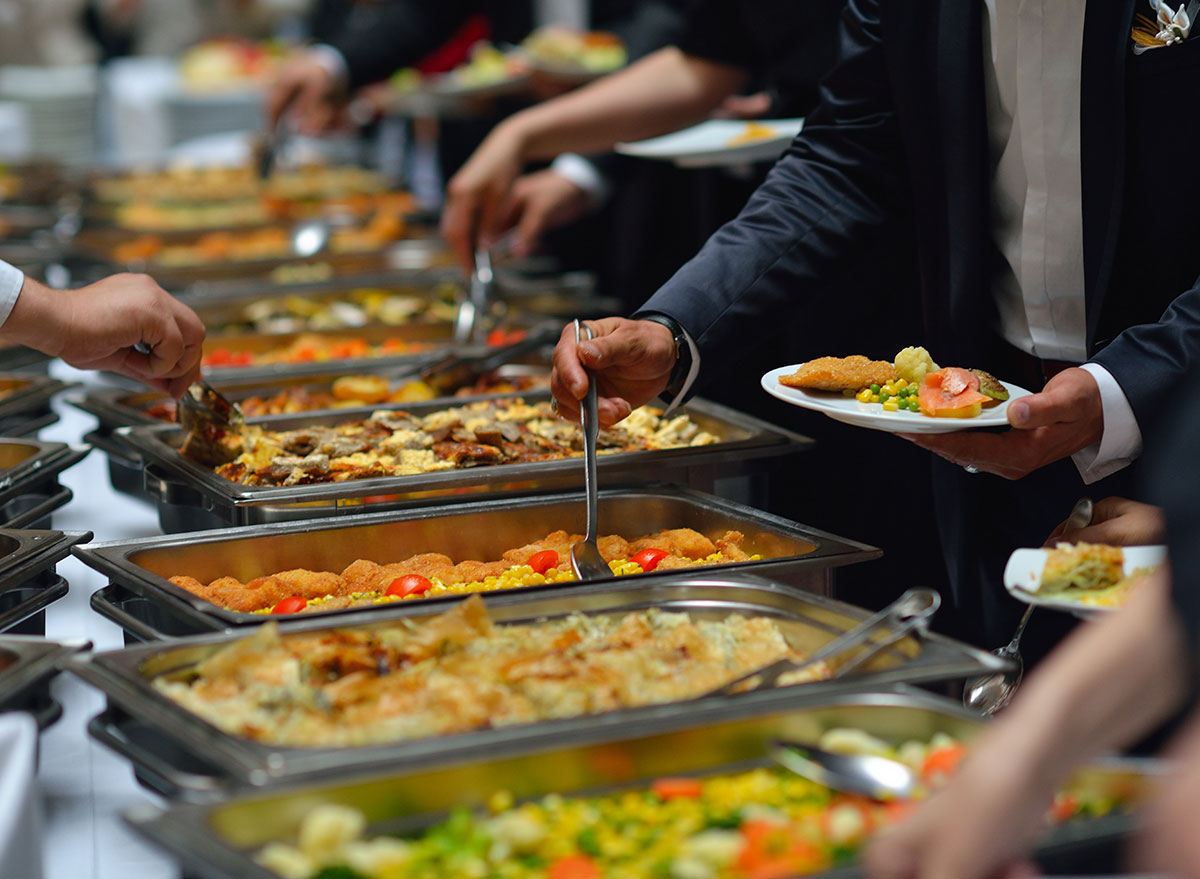
Even if restaurants followed all safe reopening procedures, if you see that the restaurant's buffet is still open, make a reservation elsewhere—stat. A Shocking New Video Shows How Fast Germs Spread in Restaurants, and—spoiler alert—it's because people used shared utensils at a buffet. The same problem goes for any salad bars or soft drink stations. Speaking of soft drink station, here are Things You'll Never See in Fast Food Restaurants Ever Again.
